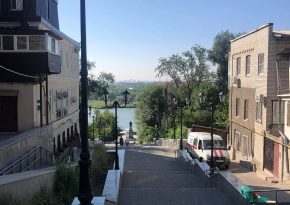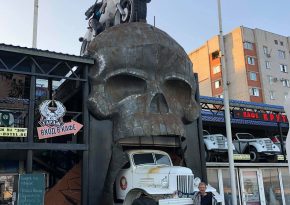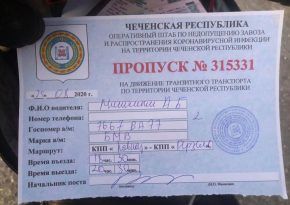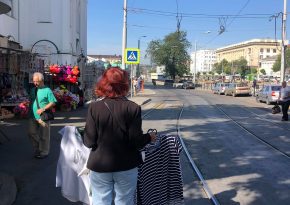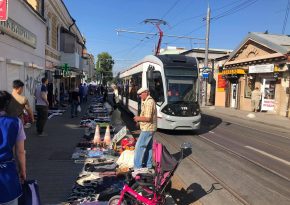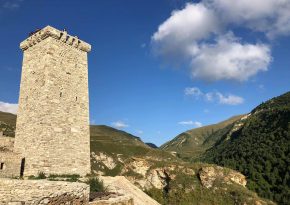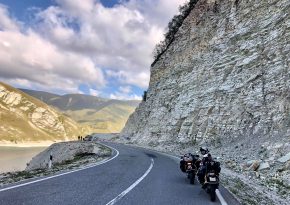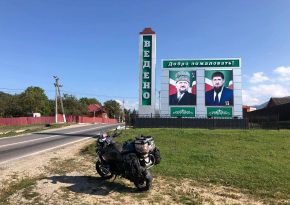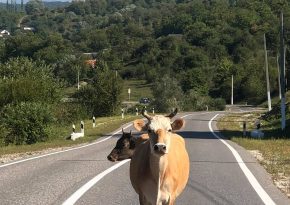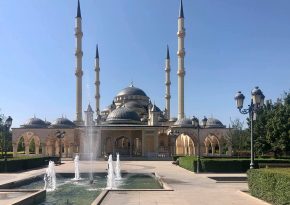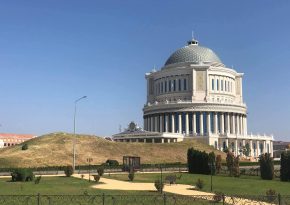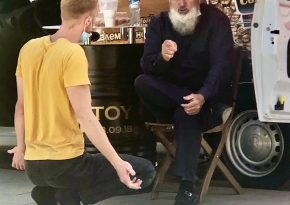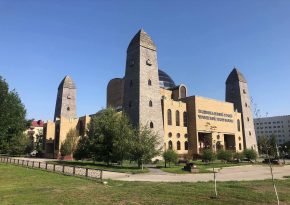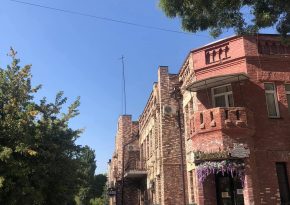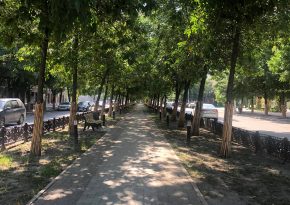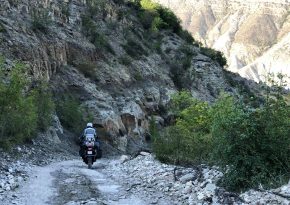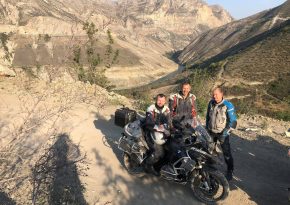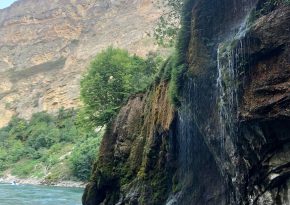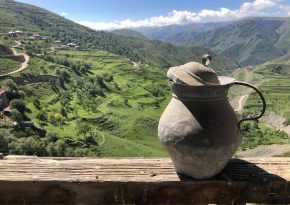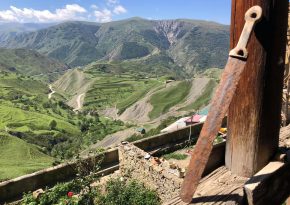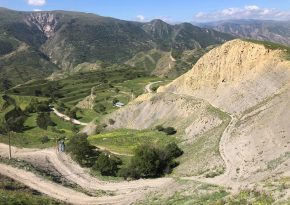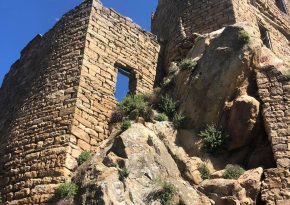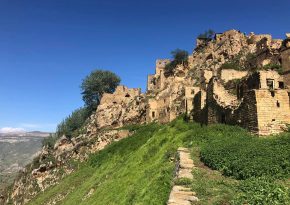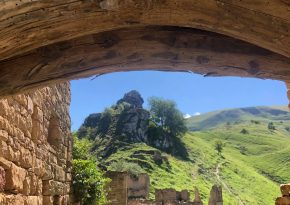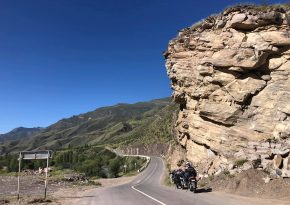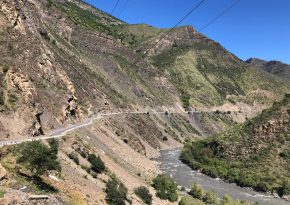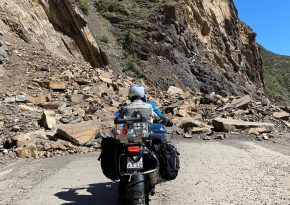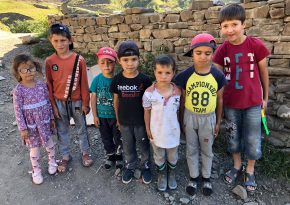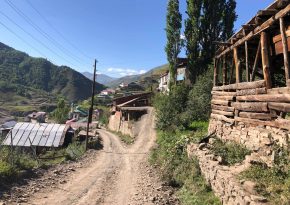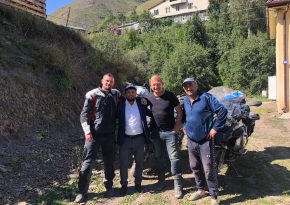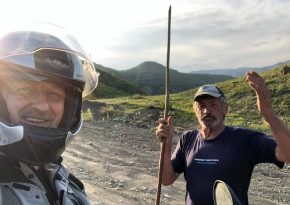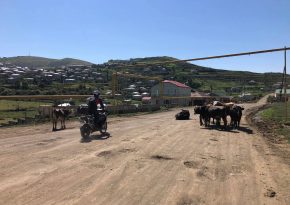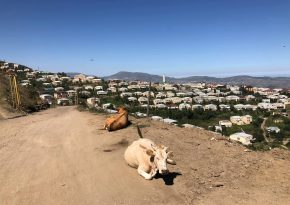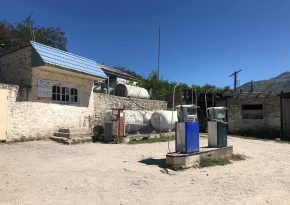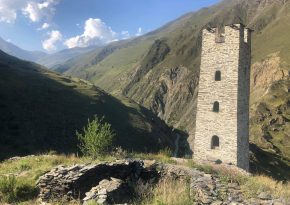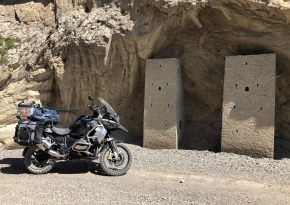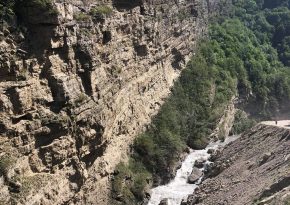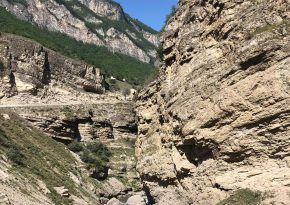Caucasus 2020. Motorcycle Adventure. Part 1
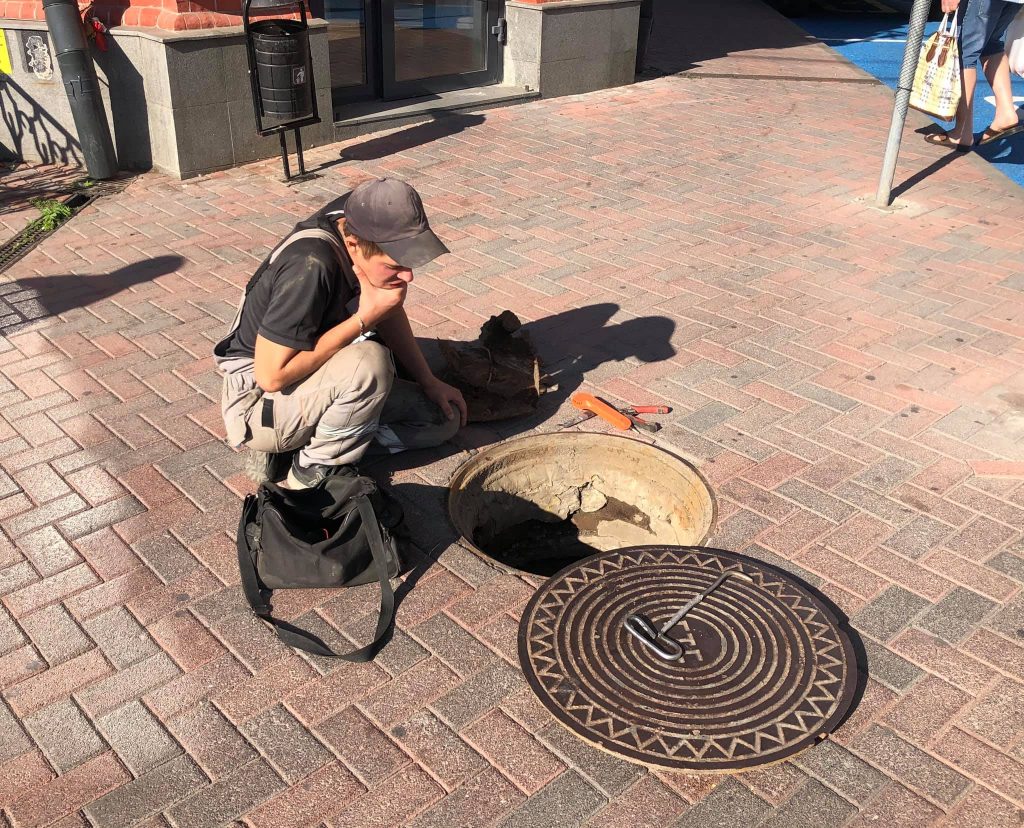
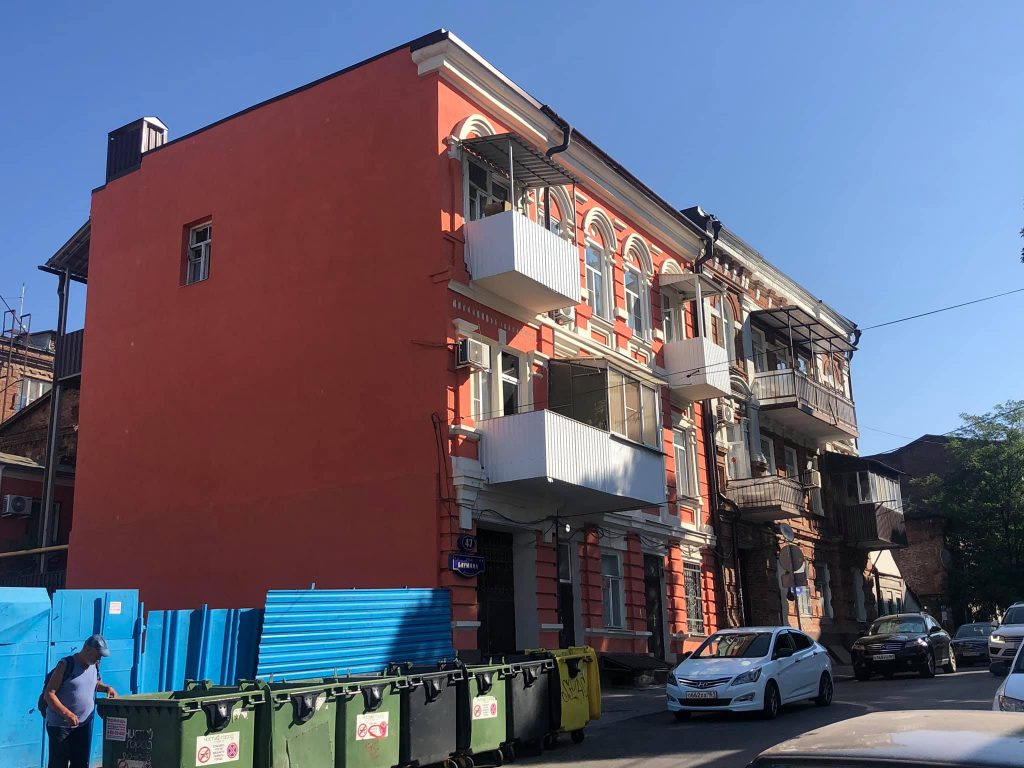

Chechnya.
Checkpoint on the federal highway "Caucasus". The border between Ingushetia and Chechnya.
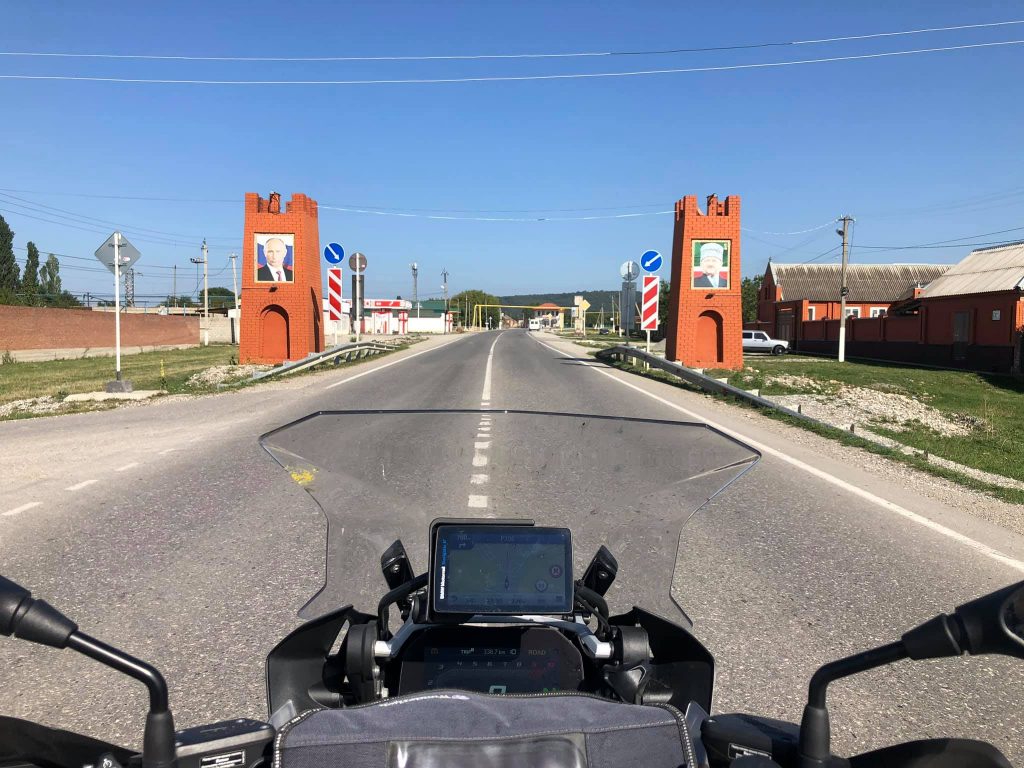
-Where are you headed? - asked the young bearded lieutenant of the Chechen police, looking at me through black sunglasses.
-To Grozny. - I replied shortly
You can't go to Grozny, only transit to Dagestan. A pass for two hours.
-I know. But we need to go to Grozny. They should call you now. - I smiled in response. The lieutenant looked at me again and put the documents aside. After a couple of minutes, a captain appeared, also wearing glasses and a beard.
-Who's heading to Grozny? - he asked, addressing the queue of people like us, who wanted to enter the territory of Chechnya. I raised my hand.

Let them pass - he said, addressing the lieutenant. Five minutes later, we were already flying on our bikes along the four-lane perfect highway towards the capital of Chechnya.
Before reaching Grozny, where we decided to stay for the night, we headed to the Vedensky District, to the high-mountain lake Kezenoyam. It's about a hundred kilometers away from the capital. (N 42.773212, E 46.150442) The lake is situated at an altitude of about 2 km, and there's a stunningly beautiful asphalt road leading to it with breathtaking views and countless sharp turns. The lake itself is quite large, deep (72 m), and truly picturesque, just like the road leading to it. A little higher up from the lake, you'll find the ancient city of Khoi, locals say it's a thousand years old or even more. However, only a large cemetery with tombstones, a restored tower, and a few stone structures remain from the city. (N 42.753387, E 46.132173)
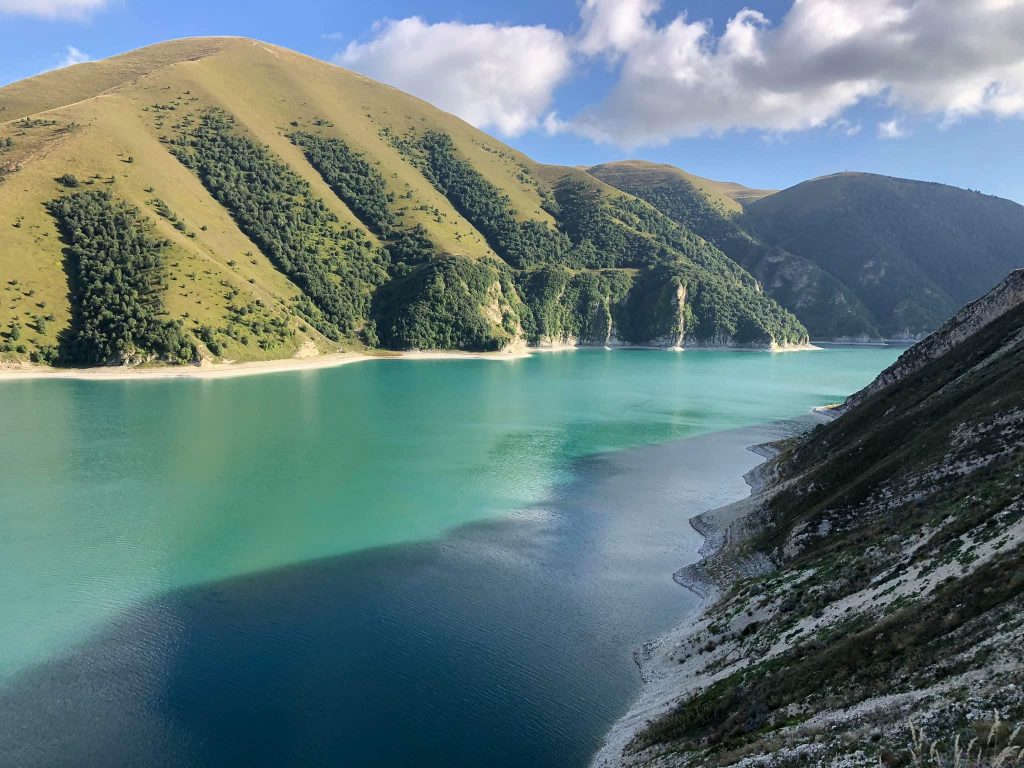
On the way, we stopped by Shali, a very impressive city with a fantastically beautiful, the largest in Europe, snow-white mosque called "Pride of Muslims". (N 43.146097, E 45.901369).
We've only been in Chechnya for the first day, but it's already impressing us with its cleanliness, excellent roads, and friendly, welcoming people! Super!
We returned to Grozny after dark.
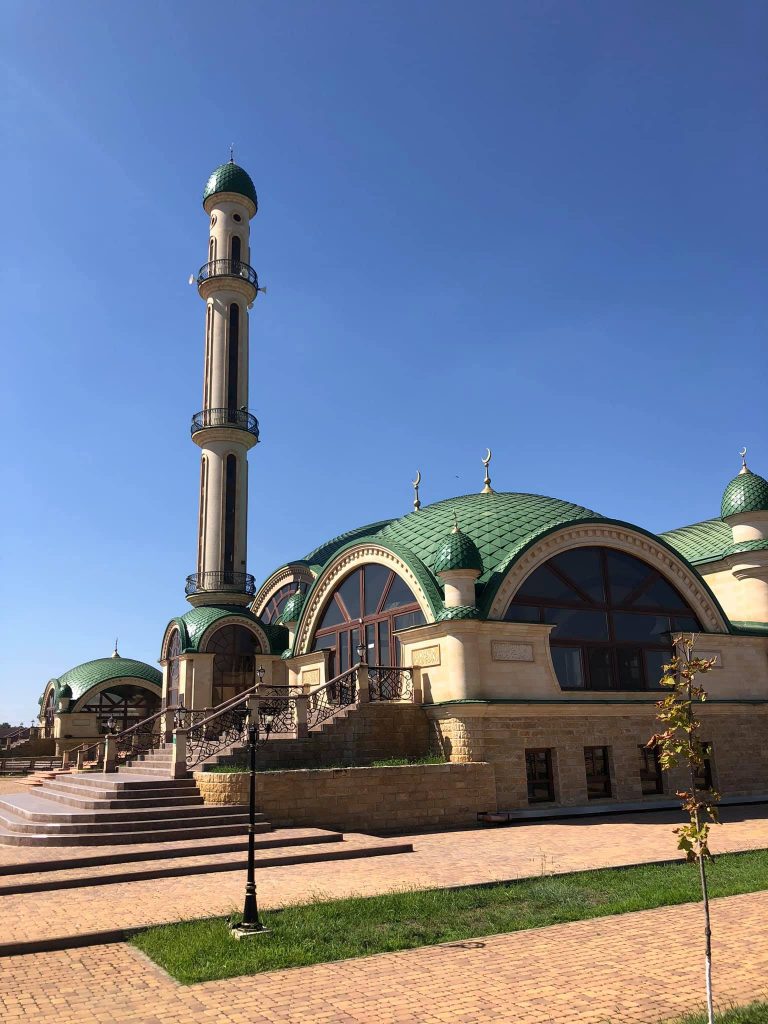
Grozny.
-Why are you doing this? Don't do it No one will come near your motorcycle here,said the police officer with a smile, dressed in a fitted black uniform, a black beret, dark sunglasses, and a sidearm, resembling a special forces soldier.
We've just arrived in Grozny and parked at the open parking lot in front of the hotel on V.V. Putin Avenue. I felt a bit embarrassed, so I put the anti-theft device in the trunk. Yeah, it's true, it's unnecessary here. In Grozny, you can leave your wallet on the street, and it will still be there in the morning.
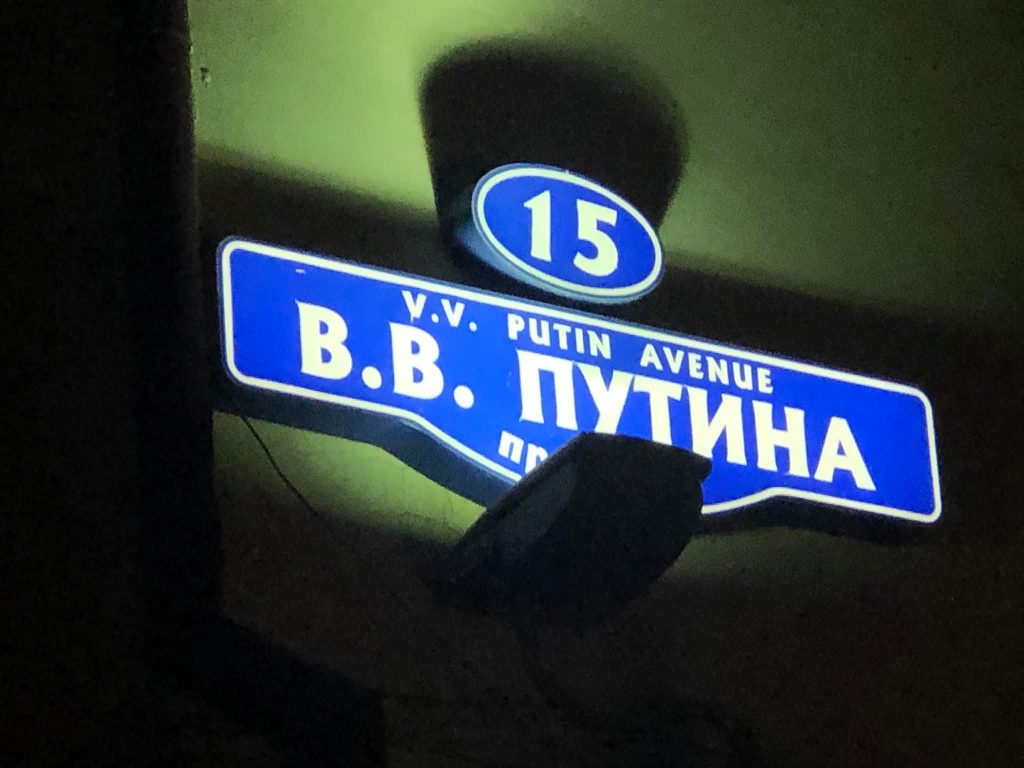
This is my third time in the capital of Chechnya in the last five years, and every time I'm amazed at how quickly it's changing. New modern shopping centers, hotels, avenues, and parks are being built. The roads, not only in the capital but throughout Chechnya, are no worse, if not better, than those in Europe. And almost everywhere, it's impeccably clean.
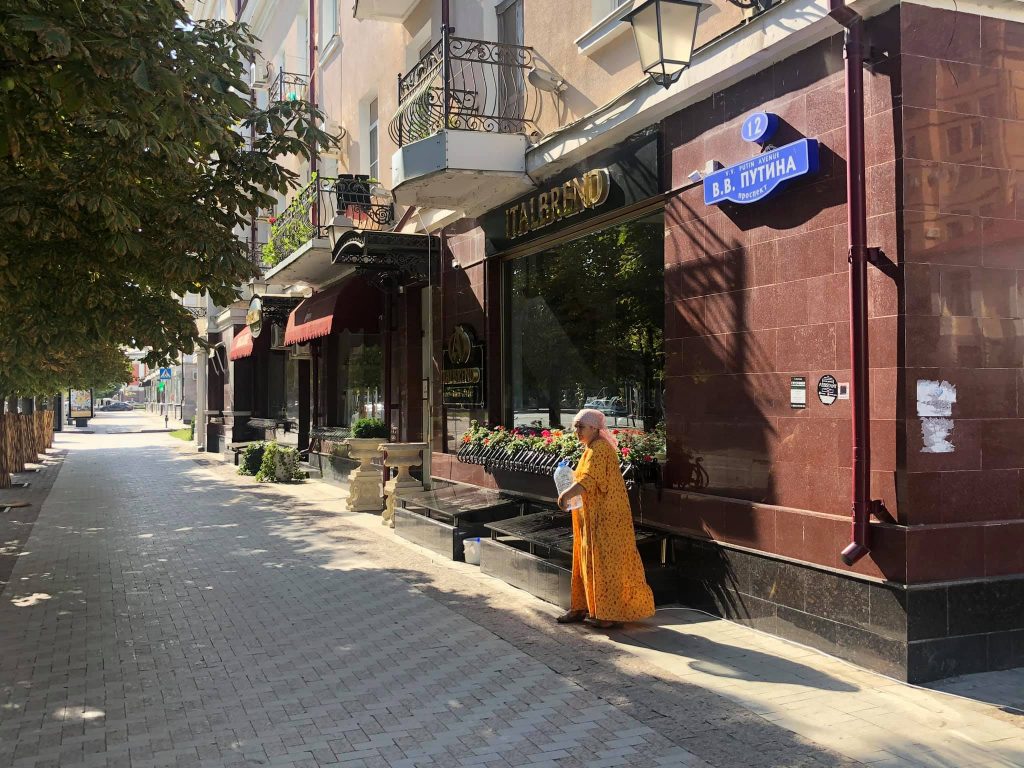
переведи текст с русского на английский в разговорном формате: The center of Grozny is filled with greenery and flowers, and there are many fountains and water features. It's very comfortable here, especially in hot weather. At every corner, you can find cozy cafes and restaurants where you can eat deliciously and affordably. However, there are some nuances with alcohol. It's not available here, at least I haven't come across any.

And also, right in the center, on the banks of the Sunzha River, they are constructing the Akhmat Tower, a grand building with 102 floors and a height of 435 meters! The project's cost is 1 billion American dollars. Wow... it's impressive in every sense!
Dagestan.
We passed the checkpoint at the border of Chechnya and Dagestan without stopping. And right away, the decent highway ended, the shoulders turned into garbage dumps, and the first Dagestani city, Khasavyurt, seemed to take us from an Eastern fairy tale back to a bleak reality.
The main street along which we were driving, raising dust, resembled a big Eastern bazaar in its worst form. Makeshift stalls and shops were built along the road without any plan or design. Everyone does as they please. Plastic bags and other garbage are blown along the roadside by the wind. It's sad.

Our first destination is the famous Sulak Canyon. It's a massive gorge, about two kilometers deep (!), and 53 kilometers long, with the crystal-clear turquoise waters of the Sulak River flowing at the bottom. In terms of its scale, this canyon ranks in the top ten in the world and is comparable to the renowned Grand Canyon in Arizona.
And it's truly impressive! If you're in Dagestan, be sure to visit this place. The best way to get there by car is to go to the village of Dubki, where you'll find an excellent viewpoint for taking photos and admiring this natural wonder. (N 43°00'59.83" E 46°49'56.04")

I strongly recommend crossing to the opposite side of the canyon and descending to the village of Zabutli, where you can rent a boat for 30 minutes for 3000 rubles at the boat station. (N 43°00'35.32" E 46°49'16.73") Down below, the canyon impressed me even more! Vertical walls, some fantastic green garlands of plants with thousands of thin streams of water flowing, enormous layers of uplifted rocks, cliffs, and scree – it's really amazing!
Right here in the village, you can stay overnight at one of the guesthouses, where they will warmly welcome you, provide accommodation, and serve delicious meals for very reasonable prices!
Dagestan. Chokh.
Dagestan has a lot of interesting places with a rich history. One city, Derbent, which is 5000 years old, is really impressive! But we haven't reached it yet. Our route takes us into the mountains to the peaks of the Caucasus, where there is also a lot to see.
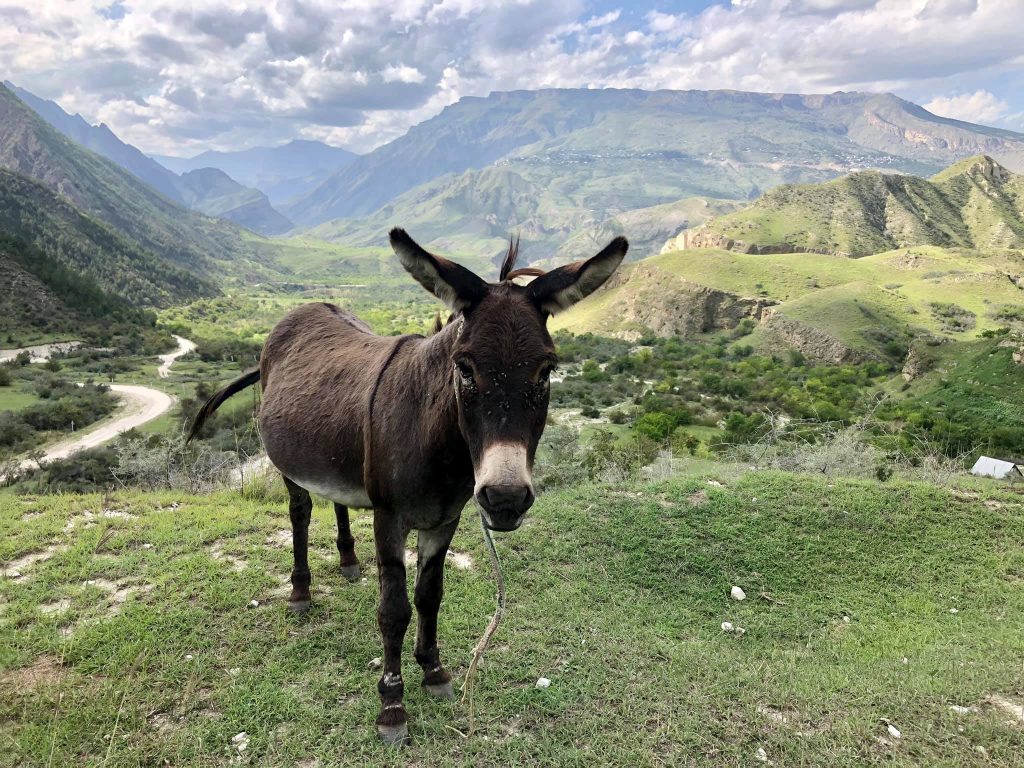
Not far from the village of Karadakh in Gunibsky District, there is a unique place called Karadakh Gorge. (N 42.46379, E 46.887638) It's a gorge just over a kilometer long, with a small river flowing through it. In summer, the river turns into a slender stream, and you can easily walk along its bed in sneakers. The gorge is interesting because in some places, it's so narrow that the vertical walls almost touch high up, and sunbeams barely penetrate through the narrow strip of sky above your head.
Huge car-sized rocks hang, wedged between the walls of the gorge.
By evening we reached the high-mountainous aul Chokh. ( N 42.32113, E 47.028863)
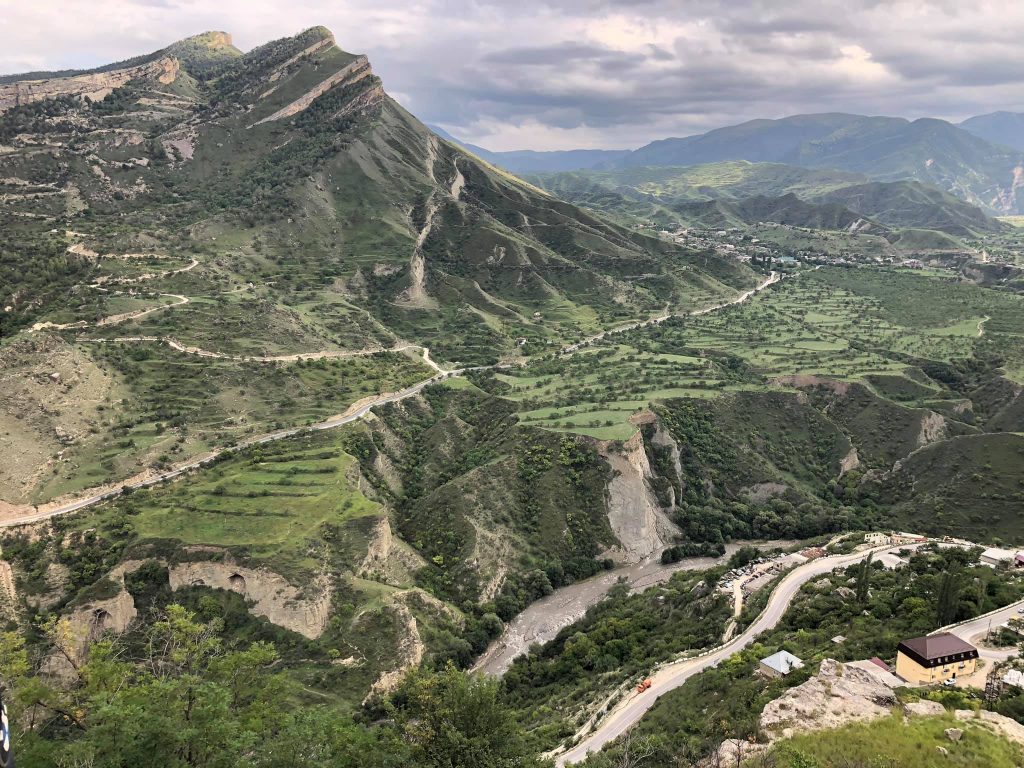
The mentions of this settlement date back to the 8th century. It's a very interesting village from a historical and architectural point of view. Ancient stone houses are stacked one above the other on an almost vertical slope of the mountain, narrow streets with steep ascents and descents, some of them are so narrow that it's not easy for two people to pass by each other.
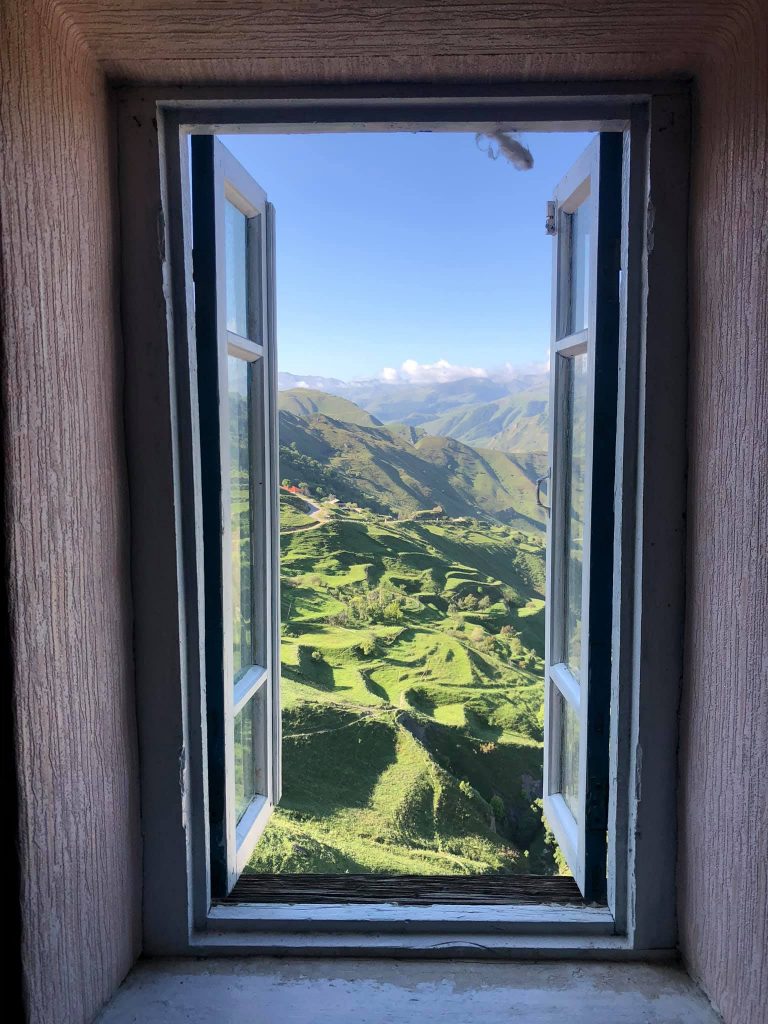
It's a pity that this once densely populated village is gradually dying out. Just like another village with a thousand-year history, Gamsootl, located on the top of the neighboring mountain at 1850 meters, has turned into a ghost town after the last resident passed away five years ago. (N 42.303169, E 46.995927).

You can only reach it on foot, walking along a narrow trail for 1500 meters to the very top of the cliff. How could people live here? It's hard to even imagine.
Dagestan. Bezheta.
Today was not easy, but it was a super positive and eventful day! In the morning, we set out from the village of Hebda towards the main Caucasus mountain range, towards the border with Georgia. The route is quite challenging and not at all popular among regular tourists.
After 40 km, in the village of Antsukh, the asphalt ended, and we continued on a dusty, rocky road with potholes, landslides, and debris.
The endless serpentine road wound along the gorge, taking us higher and higher into the mountains. By lunchtime, we reached a midway point - the highland village of Bezhkta (N 42.132294, E 46.135445). We slowly rode through the central street, searching for a place to have lunch and refuel our motorcycles. There were quite a few people around, especially children. Everyone looked at us with surprise, smiled, and warmly waved their hands, as if we were riding elephants through the village, not motorcycles.
As soon as we stopped to ask about fuel and a cafe, five men approached us with the usual questions: "Where are you from?" "Where are you heading?" "How much does the motorcycle cost?" and so on.
Finding food spots in Bezheta turned out to be quite straightforward. There are none at all.
But there was a gas station with only one pump and two hoses – one for diesel fuel and the other for regular gasoline (92 octane).

The gas station manager, cashier, and attendant all in one person, after we filled up our tanks, came up to us, introduced himself, and looking at the meter readings, said that we had put in fuel for one and a half thousand rubles, but he would only take a thousand from us, and the five hundred is his gift to us since we are guests and came from afar. Honestly, I must admit, this is the first time in my life when at a gas station not only did they not top up my tank, but they also gave me 10 liters of gasoline as a gift just like that!
We had lunch at the house of a young guy, who asked us about cafes. By the way, the offer to come over and have lunch came from several people right away, including the gas station owner.
The hospitality and openness of the people in Dagestan never cease to amaze! Here, it's impossible to stay hungry or without a place to stay, even if you don't have a penny with you.
On that day, we covered 200 kilometers, but what kilometers they were! A significant part of the route followed the border, offering fantastic views of mountains and deep gorges. We passed through three border checkpoints, where armed personnel carefully checked our documents. We climbed up to the Gunib Pass at 2500 meters (N 42.166794, E 46.022378) and descended from it on a very steep, rocky, and dusty serpentine road.

Well, my friends, all those famous tourist passes like Stelvio, Transfagarasan, and other Trollstigen roads with lines of dozens of buses full of Chinese tourists – they're like kiddie rides compared to this road.
And in the evening, all sweaty, dirty, tired, with sunburnt but happy faces, we arrived in the village of Botlikh, where we decided to stay for the night. (N 42.66555, E 46.217861)
Dagestan.
Kubachi.
We continue exploring mountainous Dagestan.
In the morning, we spent two hours trying to figure out if it's possible to reach the highest mountain village in Europe, Kurush, which is located 130 km from Derbent at an altitude of 2560 m. (N 41.283788, E 47.833991)
The thing is, it's located right near the border with Azerbaijan, and to enter the border area, you need to obtain permission from the border service in advance, which we certainly didn't have. We didn't want to take any risks, so we decided to visit another equally famous village, also situated high in the mountains - Kubachi. (N 42.095095, E 47.59771)
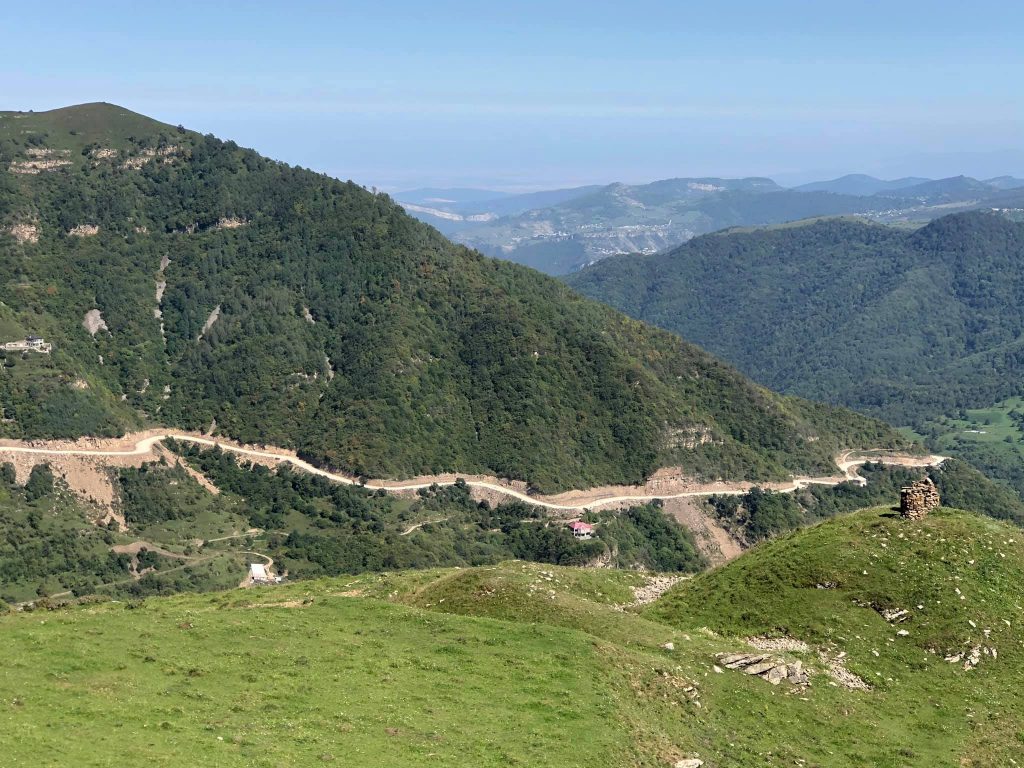
This village is famous for its unique production of cold weapons and silver jewelry that has been existing here for many centuries. The village is quite large, with around three thousand residents, and during the Soviet era, there was a whole factory here dedicated to crafting silver items. After the collapse of the USSR, the factory was closed, and all the craftsmen started their individual production, opening workshops in their own homes. One of these craftsmen, Daoud, invited us to his home and showed us a masterclass on making silver jewelry.
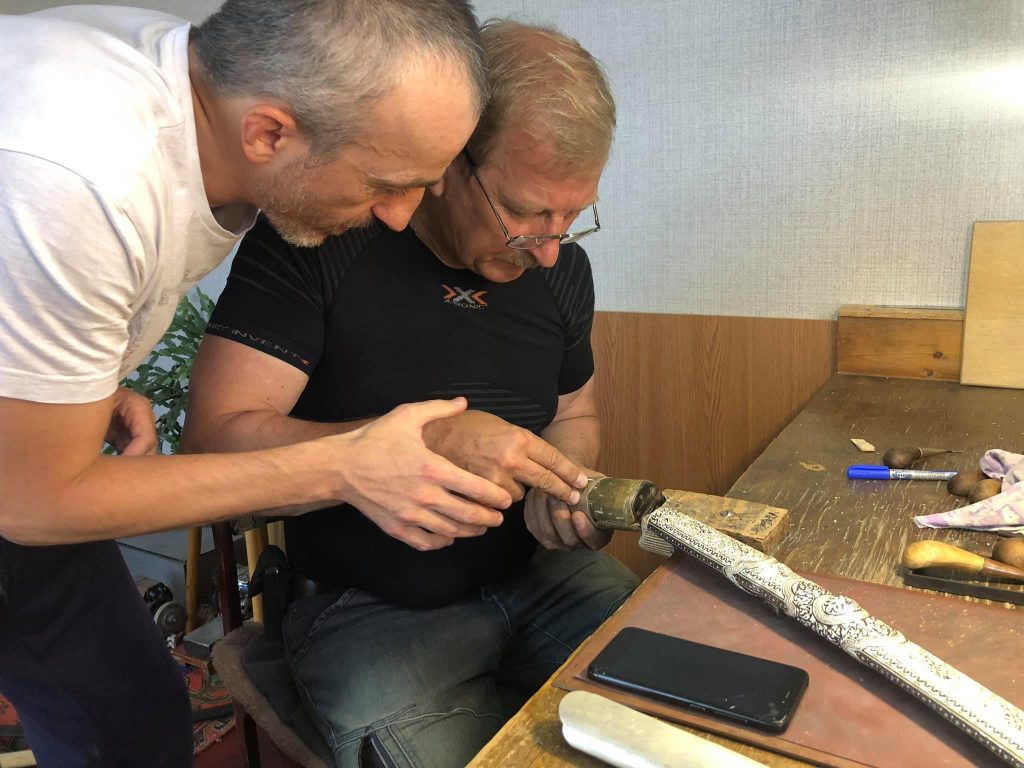
Everything is done by hand, without the use of machines or modern equipment. His father, grandfather, and great-grandfather also worked in this craft. The refined movements of the chisel transformed the shapeless blank into a true masterpiece of jewelry right before our eyes! It's just a pity that this craft is gradually fading away. It's challenging to compete with modern technologies like laser metal cutting and computerized copying machines. Moreover, the fashion for jewelry is shifting to the past. In today's technological world, few people wear daggers with precious stone-encrusted silver handles or massive necklaces, rings, and earrings.
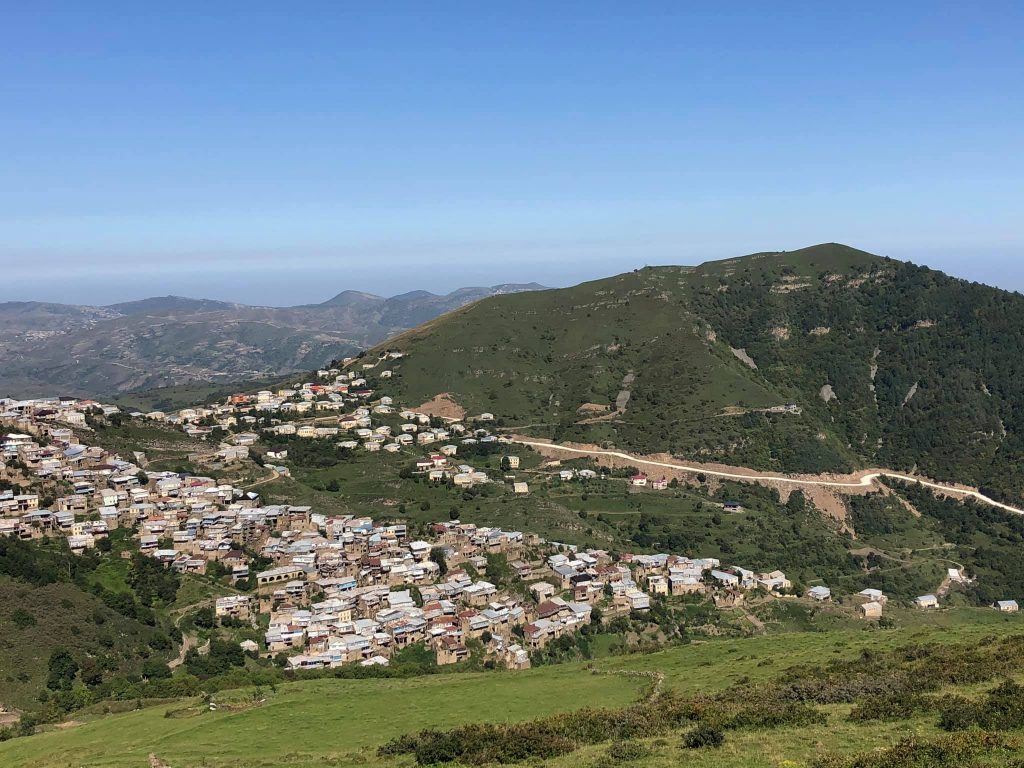
Having reached the highest point, we admired the breathtaking landscapes of the village against the backdrop of lush green mountains and then started our journey back along the winding, dusty, rocky serpentine road.
Chechnya. The Dead City of Khoi-Pede.
From Grozny to Vladikavkaz, you can get there in an hour and a half via a beautiful highway, but our navigator showed us a more interesting route. It took us about five to six hours through the Argun Gorge, heading up to the main Caucasus ridge, and then crossing through Ingushetia into North Ossetia.
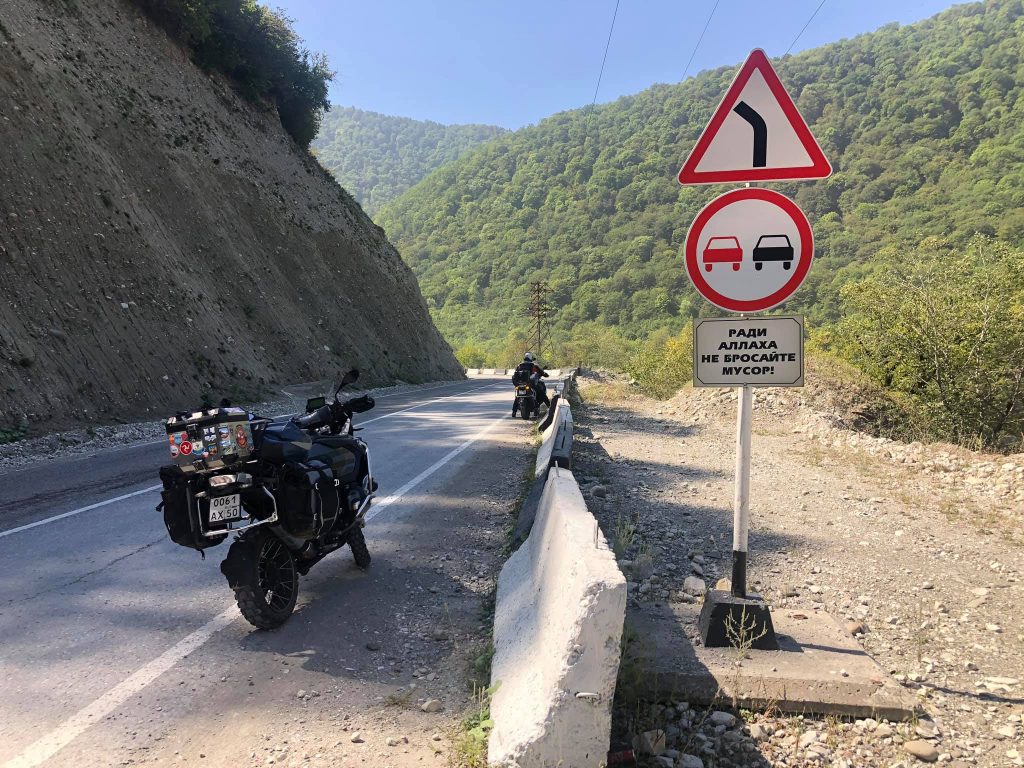
We're starting from Grozny in the morning, heading south. Around the village of Starye Atagi, there's an excellent paved road that goes into the gorge and takes us up into the mountains along the Argun River. Shatoi, Ushkaloy, Nihaloy, Kokadoy — these old Chechen villages now look very neat. Clean and tidy, no garbage, unlike the mountain villages in Dagestan.
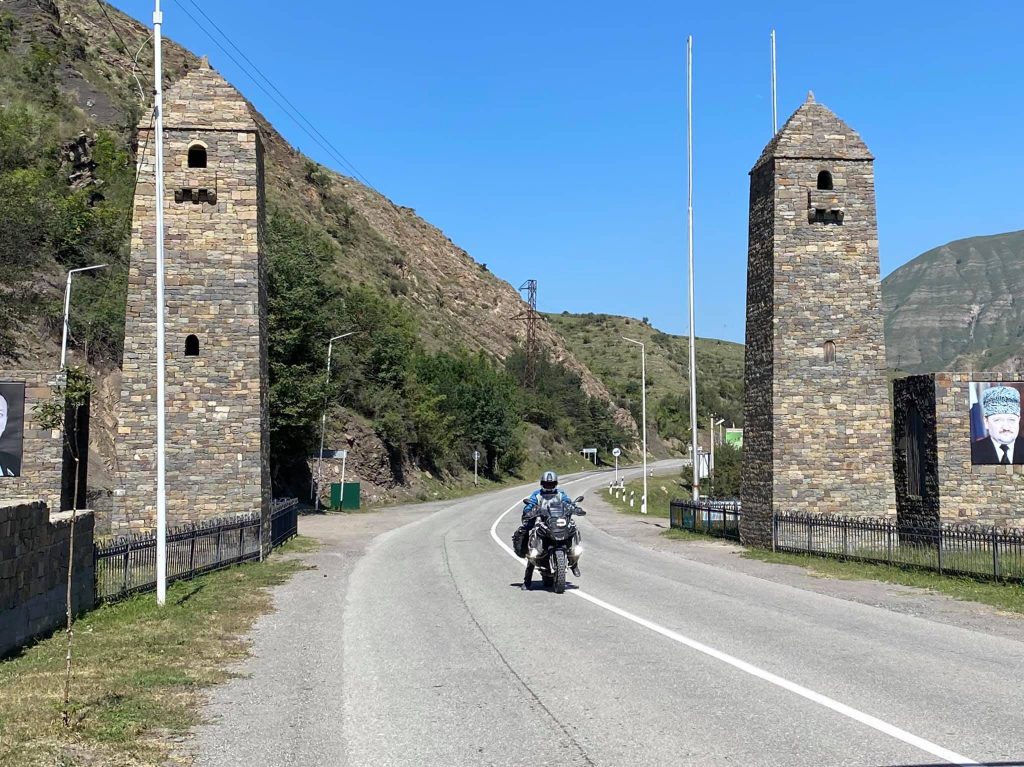
As we leave Nihaloy, we turn left, where a small stream joins the Argun, forming a cascade of waterfalls in a beautiful gorge. (N 42.836808, E 45.66461)
The higher we go into the mountains, the more picturesque it becomes around us. Sheer cliffs approach the rushing river, the gorge narrows, and in some places, suspension bridges are thrown across the river. Stone watchtowers appear on elevated spots.
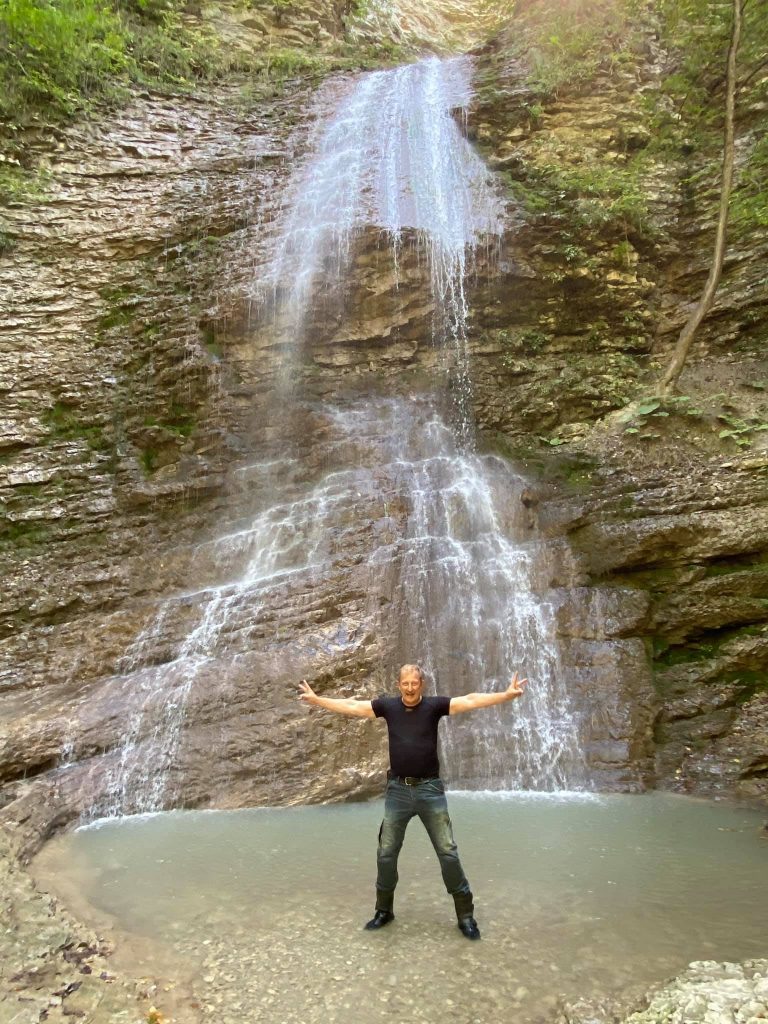
In the district village of Itum-Kali, we stop at a whole complex-museum made up of towers that served both as dwellings and for protection against enemy attacks. (N 42.72844, E 45.572216)
We come across two more of such towers on the opposite bank of the Argun River at a narrow point in the gorge. They completely block the passage through it like fortified outposts. (N 42.788409, E 45.618924)
After Itum-Kali, we stop at the border checkpoint, where they check our documents, register us, and then we continue our journey.
The asphalt ends, and we continue on a dusty gravel road that goes higher and higher into the mountains. We finally reach an interesting place - the city of the dead, Choi-Pede. (N 42.707144, E 45.25921) A tall watchtower on the mountaintop is surrounded by stone crypts where human bones and skulls are laid. In some crypts, there are a lot of them, dozens of skeletons. It's a creepy sight.
After exploring the city of the dead, we find out that the road ahead is closed. There's a barrier and another border patrol unit nearby.
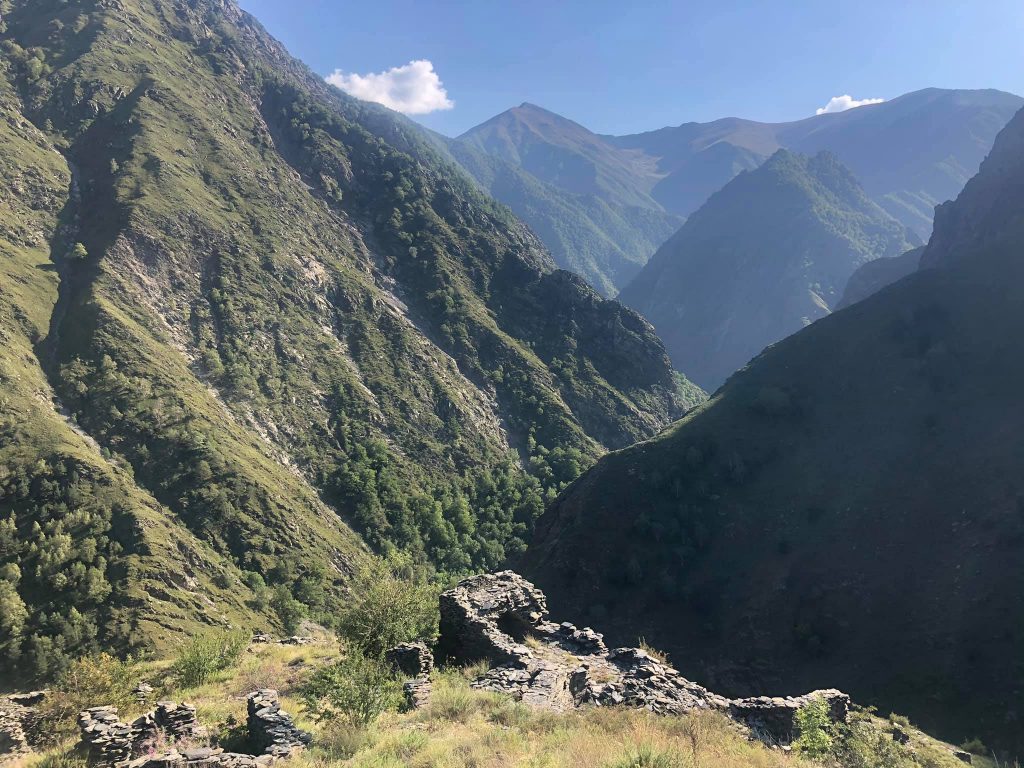
About 5 km before the border with Georgia, passage is allowed only with special permits. What a pity... we'll have to go back to Grozny.
comments powered by HyperComments
 Cap-travel.ru
Cap-travel.ru
